As a sorting device that relies on the coordinated operation of airflow and machinery, the service life of an air classifier is affected by multiple factors, including the suitability of the selected model, the quality of daily maintenance, the wear resistance of components, and the stability of operating conditions. In practical applications, due to problems such as fan overload, airflow channel wear, and impurity blockage, the average service life of traditional air classifiers is often less than 5 years, far below the design expectation. To achieve "durability" for air classifiers, a full-cycle management system of "scientific selection in the early stage + meticulous operation and maintenance in the middle stage + targeted upgrades in the later stage" needs to be established to reduce losses from the root and improve the stability and durability of the equipment. This article combines the core structure of the air classifier (fan, airflow channel, conveying system, control system) and common failure causes to provide specific optimization solutions.
Scientific Selection in the Early Stage:
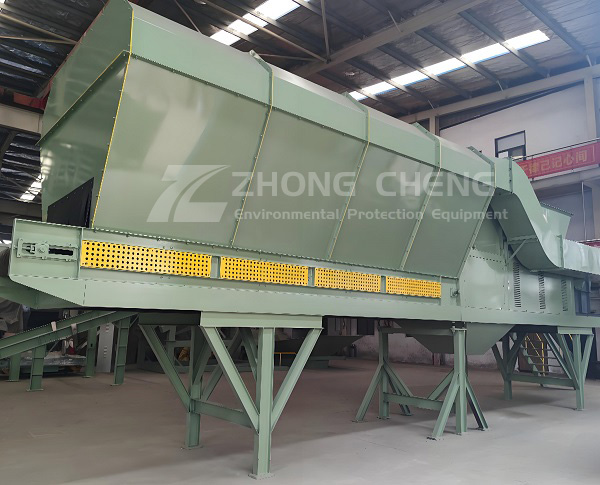
Adapting to Operating Requirements and Avoiding "Overload Operation" Improper selection is one of the core reasons for early damage to air classifiers. If the equipment's throughput, temperature and humidity resistance, and wear resistance level do not match the actual operating conditions, it is easy to cause problems such as fan overload, component corrosion, and structural deformation, significantly shortening its service life. Scientific equipment selection should focus on two key aspects: "precise matching of operating parameters" and "reasonable customization of equipment configuration."
1. Precisely match core operating parameters to avoid "underpowered processing". First, it's crucial to understand the key characteristics of the materials being processed: Material density range (e.g., 0.3-0.8 g/cm³ for lightweight components of municipal solid waste, 2.3-2.5 g/cm³ for recycled aggregates from construction waste) determines the required fan pressure; higher density requires higher pressure (e.g., ≥500 Pa for aggregates, 200-300 Pa for lightweight plastics). Insufficient pressure will cause the fan to operate at full load for extended periods, increasing motor temperature and accelerating insulation aging. Material moisture content (e.g., 40%-60% for high-moisture kitchen waste, ≤10% for dry plastic fragments) affects the corrosion and anti-sticking design of the airflow channels. High-moisture materials require stainless steel channels with a hydrophobic coating; otherwise, carbon steel channels are prone to corrosion. Material impurity content (e.g., 5%-10% metal impurities in shredded electronic waste, 5%-10% hard impurities in recycled waste paper) also plays a role. A 1%-2% margin is needed to determine whether a pre-treatment device is required. Directly processing materials containing a large amount of hard impurities can easily cause scratches on the inner wall of the airflow channel and wear on the fan impeller.
Secondly, the actual processing capacity and peak fluctuations need to be calculated: a 15%-20% capacity redundancy should be reserved during selection to avoid equipment overload due to peak production. For example, a municipal solid waste sorting line is designed to process 200 tons per day. If a wind separator with a rated capacity of 200 tons/day is selected, when the daily waste intake reaches 230 tons, the fan will need to operate at 15% above its rated power. The motor winding temperature will rise from the normal 60℃ to over 85℃, the insulation aging rate will accelerate by 3 times, and the motor lifespan will be shortened to half of the original design. It is recommended to select equipment with a rated capacity of 240-250 tons/day to ensure that it remains within the safe range of 80%-90% of the rated load under peak conditions.
2. Customized Configuration of Key Components to Enhance Wear Resistance
For different industry operating conditions, the core components of the air separator need to be customized and upgraded:
Fan System: In scenarios involving highly abrasive materials such as mining and construction waste, a "wear-resistant alloy impeller + sealed bearing" configuration should be selected. The impeller material should preferably be ZG35CrMnSi (hardness HRC45-50), which offers 4 times the wear resistance of ordinary Q235 steel. The bearings should feature an IP65-level waterproof seal design to prevent dust and moisture intrusion that could lead to lubrication failure, extending the bearing replacement cycle from 6 months to 18 months.
Airflow Channel: In clean industries such as food and pharmaceuticals, the inner wall of the channel needs to be polished to Ra≤0.8μm and passivated to prevent bacterial growth from material residue. In corrosive environments such as chemical and metallurgical industries, the channel material should be 316L stainless steel (resistant to acid and alkali corrosion) or lined with PTFE (resistant to organic solvent corrosion) to prevent chemical media from corroding the carbon steel channel.
Conveying System: When handling materials containing entangled materials (such as plastic ropes and fabrics from household waste), the conveyor belt must be equipped with an anti-deviation device and automatic correction rollers, and a high-wear-resistant rubber belt (with a steel wire skeleton) should be used, with a tear resistance increased to over 20MPa to prevent edge damage caused by friction due to belt deviation.
Mid-term Refined Operation and Maintenance:
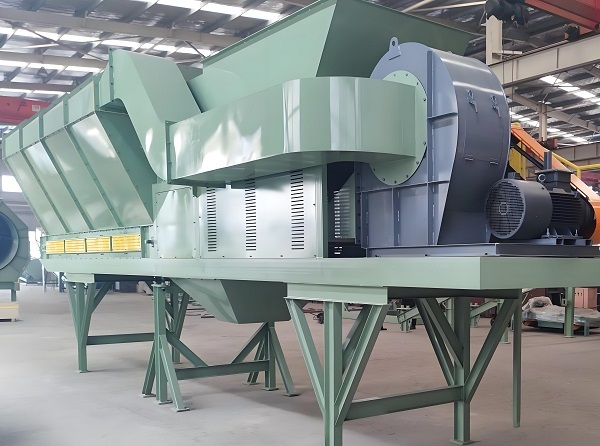
Establishing a Prevention-Focused Maintenance System. The wear and tear of air separators is mostly gradual; a lack of routine maintenance can cause small problems to escalate into major malfunctions (e.g., dust accumulation on fan blades leading to dynamic imbalance and ultimately bearing damage). A maintenance system should be built around "daily inspection, regular maintenance, and fault early warning" to control wear and tear at its initial stage.
1. Daily Inspection: Focus on High-Frequency Loss Points and Promptly Identify Potential Problems
Before daily startup and during operation, focus on inspecting 6 key components and creating an inspection record:
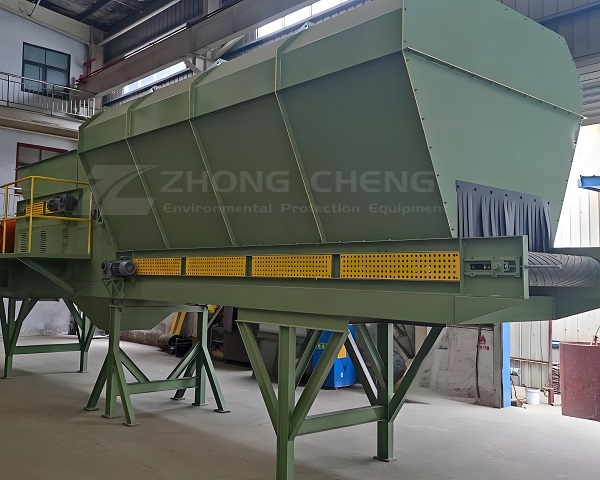
Fan System: Check fan operating noise (normal should be ≤75 decibels; abnormal noise may indicate impeller dust accumulation or bearing wear), motor temperature (surface temperature ≤70℃; if overheating occurs, stop the machine and check for overload or poor heat dissipation), and outlet air pressure (monitored with a pressure gauge; fluctuation range should be ≤±5%; a sudden drop in air pressure may indicate channel blockage).
Airflow Channel: Observe the flow of material within the channel (no stagnation, no impact noises), check the sealing of channel connections (no dust leakage; leakage will cause airflow turbulence and accelerate channel corrosion), and clean residual material from the inner wall of the channel daily (especially high-humidity materials to prevent clumping and subsequent channel wear). Lubrication System: Check the grease level in the fan bearings and conveyor belt roller bearings (the grease level should be 1/2-2/3 of the gauge). Observe the grease color (normally light yellow; if it turns black or contains impurities, replace it immediately to prevent lubrication failure and bearing seizure).
Electrical Control System: Check the temperature of components inside the PLC control cabinet (contactor and frequency converter surface temperature ≤ 60℃), the tightness of wiring terminals (no loosening or arcing marks), and sensor signals (infrared moisture meter and pressure sensor data should be stable without frequent fluctuations).
Safety Protection Devices: Test the overload protection (simulate motor overload manually; the equipment should stop within 3 seconds), the emergency stop button (pressing it should immediately cut off power to all motors), and the dust cover sealing strip (no aging or cracking, ensuring a good seal).
Material Pre-treatment: Check the operating status of the pre-screening and magnetic separation equipment (e.g., whether the screening equipment effectively removes large impurities, and whether the magnetic separation equipment separates magnetic metals) to prevent impurities from entering the air separator and causing internal damage.
2. Regular Maintenance: Replace vulnerable parts periodically to restore equipment performance.
Based on the operating intensity of the air separator and the characteristics of the materials, a graded maintenance plan is formulated. The core cycles and contents are as follows:
Weekly Maintenance: Clean the air inlet filter of the blower (to prevent dust blockage leading to insufficient air intake and increased blower load); check the conveyor belt tension (press the conveyor belt with your finger; the deflection should be ≤10mm; too loose will cause slippage and wear, too tight will cause overload of the roller bearings); calibrate the air pressure sensor and moisture detector (to ensure data accuracy and avoid equipment mis-adjustment due to parameter deviations).
Monthly Maintenance: Replace the blower bearing grease (use lithium-based grease, filling 1/2-2/3 of the bearing's internal space; too much will cause overheating, too little will cause wear); check the wear condition of the airflow channel inner wall (measure the thickness with calipers; if the wear exceeds 1/3 of the original thickness, it needs to be repaired or replaced); clean the PLC control cabinet cooling fan (to prevent dust accumulation from causing component overheating). Quarterly Maintenance: Disassemble and inspect the fan impeller (remove dust and adhering materials from the impeller surface; repair any worn or deformed blades promptly to avoid dynamic imbalance); replace conveyor belt idlers (check the idler rotation flexibility; jammed idlers increase conveyor belt wear); test the inverter output frequency stability (ensure precise motor speed control and prevent speed fluctuations that cause airflow instability).
Annual Maintenance: Perform a comprehensive disassembly and overhaul of the equipment; replace aging seals (such as airflow channel seals and bearing seals); test the motor insulation resistance (measured with a megohmmeter; insulation resistance should be ≥0.5MΩ; below this value, the motor needs to be dried or replaced); perform anti-corrosion treatment on carbon steel structural components (spray anti-rust paint to prevent oxidation and corrosion).
3. Fault Early Warning: Utilizing an intelligent system for early intervention reduces sudden damage. Modern air separators can achieve early fault warnings by adding intelligent monitoring modules:
Vibration Monitoring: Vibration sensors (measurement range 0-50mm/s) are installed at the fan bearing housing and conveyor belt rollers. When the vibration value exceeds 15mm/s (normally ≤10mm/s), the system automatically alarms, prompting checks on bearing wear or impeller dynamic balance.
Temperature Monitoring: Temperature sensors (range -20℃-150℃) are attached to the motor windings and bearings, transmitting temperature data in real time. When the temperature exceeds the threshold (e.g., 85℃ for motor windings, 75℃ for bearings), automatic cooling measures (e.g., starting the cooling fan) or shutdown protection are triggered.
Energy Consumption Monitoring: The energy consumption of the fan and conveyor belt motors is monitored in real time via an electricity meter. If energy consumption suddenly increases by more than 10%, the system prompts checks for problems such as channel blockage or material overload, preventing long-term high-energy-consumption operation that could lead to component wear.
Targeted Upgrades:
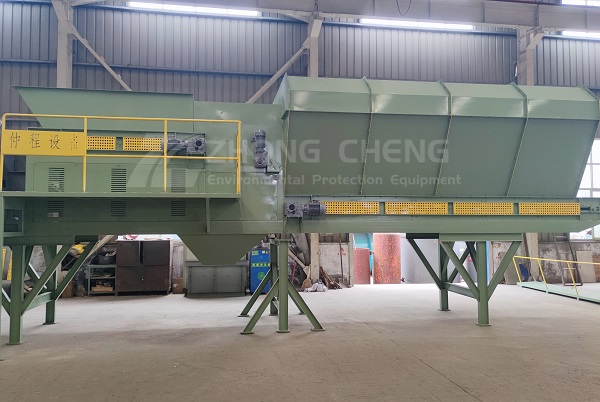
Addressing Wear and Tear, Extending Equipment Lifespan
After 3-4 years of operation, core components (such as the fan and airflow channels) will experience wear and tear. Direct replacement is costly; targeted upgrades can address these shortcomings and extend the lifespan by 2-3 years.
1. Fan System Upgrade: Enhancing Wear Resistance and Stability
The fan is one of the most severely worn components in an air separator. Common problems include impeller wear and motor overload. The following upgrade solutions can optimize this:
Impeller Wear Resistance Upgrade: The worn impeller surface is treated with tungsten carbide spraying (coating thickness 0.3-0.5mm, hardness HRC60-65), improving wear resistance by 5 times compared to the original impeller. This is suitable for scenarios involving highly abrasive materials (such as mines and construction waste). If the impeller wear is severe (blade loss exceeding 10%), it can be replaced with a bimetallic composite impeller (base material is Q235 steel, with wear-resistant alloy blocks embedded in the working surface), balancing strength and wear resistance.
Motor Energy Saving Upgrade: Replacing traditional asynchronous motors with permanent magnet synchronous motors (efficiency improvement of 5%-8%), used in conjunction with vector frequency converters, achieves precise speed regulation, avoiding energy waste during no-load or light-load conditions; simultaneously, a motor soft starter is installed to reduce the current surge during startup (starting current reduced from 6-8 times the rated current to 2-3 times), protecting the motor windings and the power grid.
Fan Noise Reduction Upgrade: Installing silencers at the fan inlet (noise reduction of 20-30dB) and adding flexible joints to the outlet (reducing vibration transmission), lowering operating noise while preventing long-term damage to the equipment structure from noise and vibration.
2. Airflow Channel Optimization: Reducing Wear and Blockage
Airflow channel losses mainly manifest as inner wall wear and localized blockages, which can be improved through structural and material upgrades:
Inner Wall Protection: For severely worn channel sections, use "inner ceramic lining" (alumina ceramic, hardness HRA85 or higher) or "high-molecular wear-resistant plate" (ultra-high molecular weight polyethylene, friction coefficient 0.05-0.1) to reduce wear caused by material impact and friction;
Anti-blockage Structure Modification: Install "high-frequency vibrators" (vibration frequency 30-50Hz) at easily blocked areas of the channel (such as bends and diameter changes), or install "quick-release cleaning doors" (cleaned weekly) to prevent material accumulation and blockage; simultaneously optimize the channel cross-sectional shape, changing right-angle bends to arc bends (radius of curvature ≥ twice the channel diameter) to reduce material retention;
Sealing Performance Upgrade: Replace aging channel sealing strips with "silicone rubber seals" (temperature resistance -60℃-200℃, anti-aging life 3 years). (Over 3 years old), and apply sealant to the joints to prevent channel corrosion and airflow turbulence caused by dust leakage.
3. Intelligent Upgrade of Control System Older air separators often have manual or simple automatic control systems, which are prone to equipment damage due to improper operation. Upgrading to an intelligent control system is possible:
Adaptive Control Upgrade: Add an AI visual recognition module (camera + image analysis algorithm) to identify material composition and particle size changes in real time, automatically adjusting fan speed and conveyor belt speed to avoid overload or low sorting efficiency caused by manual adjustment delays;
Remote Operation and Maintenance Upgrade: Upload equipment operating data (temperature, vibration, energy consumption) to the cloud platform via an IoT module, supporting remote monitoring via mobile APP or computer. Maintenance personnel can view equipment status in real time, remotely diagnose faults, and reduce on-site maintenance time;
Self-Healing Fault Upgrade: Set redundant drives for key components (such as fans and conveyor belts). When the main drive fails, the system automatically switches to the backup drive to avoid production losses due to downtime, and records fault data to provide a basis for subsequent maintenance.
Optimizing Operating Stability:
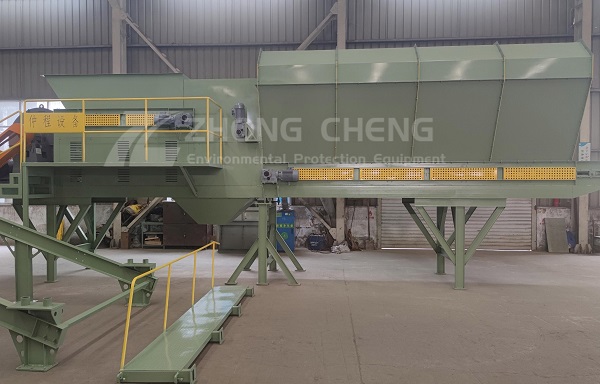
Reducing External Factors' Impact on Equipment Wear and Tear The lifespan of an air separator depends not only on its own quality and maintenance but also closely on the stability of external operating conditions. Fluctuating feed rates and harsh environmental conditions (such as high temperature, high humidity, and dust) accelerate equipment wear and tear. Optimizing the operating environment is crucial to reduce external shocks.
1. Stabilizing Feed Rate and Avoiding Frequent Overload Establish a "feed buffer - quantitative conveying" system: Set up a silo (with a capacity of 1-2 hours' processing capacity) at the front end of the air separator's feed, and use a quantitative feeder (such as a belt scale or screw feeder) to control material flow fluctuations within ±5%, preventing fan overload and conveyor belt slippage caused by sudden increases in feed rate. For example, in a construction waste processing line, by using a silo and belt scale, the air separator's feed rate fluctuation decreased from ±20% to ±3%, the number of fan motor overloads decreased from 8 times per month to 0 times, and the motor's lifespan was extended by 2 years.
2. Improve Environmental Conditions and Reduce Corrosion and Dust Damage
Take protective measures for different environmental problems:
High-temperature environments (e.g., metallurgical industry, ambient temperature ≥40℃): Install sunshades on top of equipment, add forced cooling fans or water cooling systems to motors and frequency converters, and control the operating ambient temperature of the equipment below 35℃ to avoid insulation aging and lubricant failure caused by high temperatures;
High-humidity environments (e.g., food processing, waste disposal, relative humidity ≥80%): Install dehumidifiers on electrical control cabinets (humidity controlled below 60%), and spray waterproof and rust-proof paint on carbon steel structural components to avoid electrical faults and structural corrosion caused by moisture;
High-dust environments (e.g., mining, building materials, dust concentration ≥10mg/m³): Install dust collection systems (e.g., bag filters) around the equipment, and install high-efficiency filters (filtration accuracy ≥99%) on fan inlets and motor heat dissipation vents to prevent dust from entering the equipment and causing component wear.
3. Pre-treatment to reduce damage to equipment from impurities
A multi-stage pre-treatment process is set up at the front end of the air separator to remove impurities harmful to the equipment:
Large impurity removal: A grid screen is installed (the aperture is set according to the maximum allowable particle size of the air separator, such as 300mm) to intercept large materials (such as concrete blocks in construction waste and furniture fragments in household waste) and avoid clogging the airflow channel;
Magnetic metal separation: Equipped with a permanent magnet drum separator (magnetic field strength ≥1...)
(2000Gs) Separates magnetic metals such as iron nails and wires from materials, preventing metal impurities from scratching the inner wall of the airflow channel or damaging the fan impeller; Entanglement removal: Installs a "rotary shearing impurity remover" to shear and break up entangled materials such as plastic ropes and fabrics in the materials, preventing them from wrapping around the conveyor belt rollers or fan impeller and causing equipment blockage.
To ensure the durability of the air separator, a comprehensive approach is needed across all dimensions: "selection - operation and maintenance - upgrade - operating conditions." In the early stages, precise selection lays the foundation for resistance to wear and tear; in the mid-term, meticulous operation and maintenance reduces gradual wear and tear; and in the later stages, targeted upgrades address shortcomings while optimizing external operating conditions to reduce environmental impact. This full-cycle optimization solution can extend the service life of the air separator from the traditional 5 years to 8-10 years, significantly reducing equipment replacement costs and improving enterprise production efficiency.